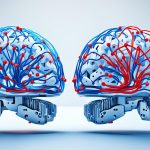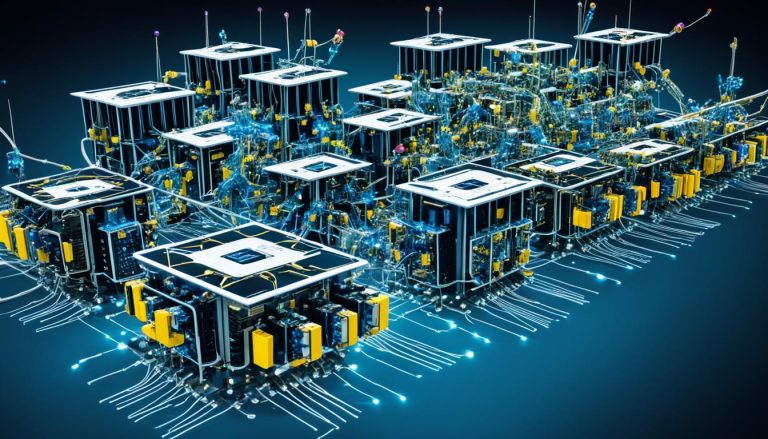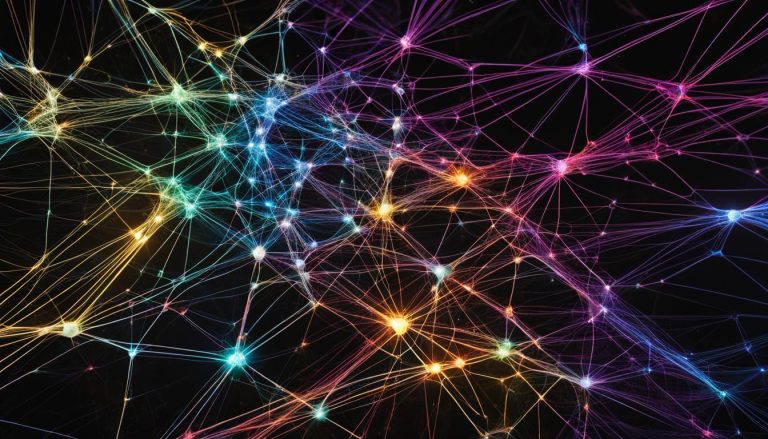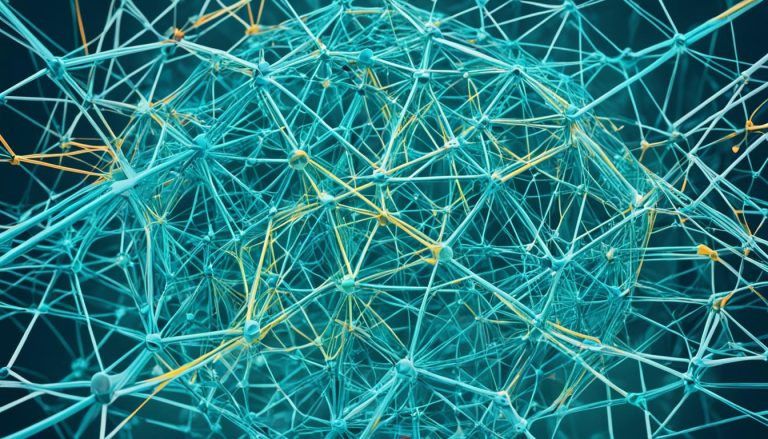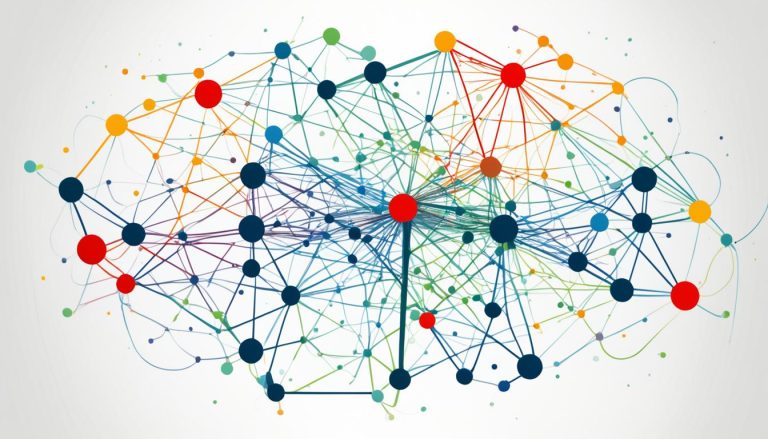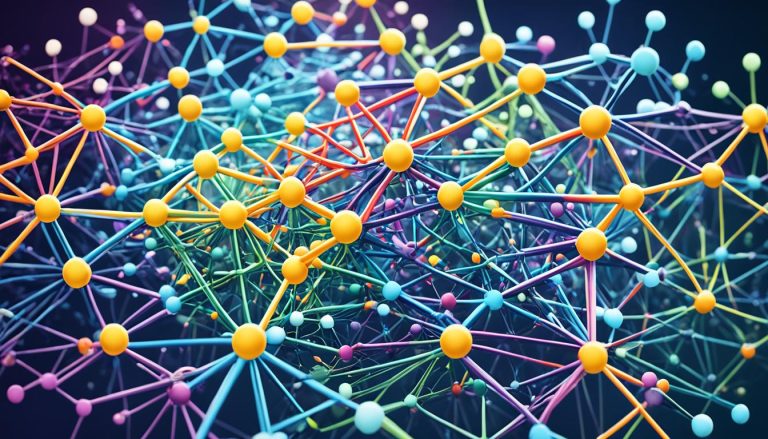Model compression techniques in AI are essential for enhancing efficiency and performance. These techniques aim to reduce the size of neural networks without compromising accuracy, making them more suitable for resource-constrained devices. In this comprehensive guide, we will explore four popular model compression techniques and their benefits and drawbacks.
The Importance of Neural Model Compression and the Challenges it Addresses
As the demand for AI applications on resource-constrained devices such as smartphones and IoT devices increases, the challenges posed by the size of neural networks become evident. With larger neural networks, there is a need for more storage space, which leads to higher inference time and increased energy consumption. This is where neural model compression techniques come into play.
Neural model compression techniques address the challenges of neural network deployment by reducing the size of the network without compromising its accuracy. By compressing the models, they become more suitable for resource-constrained devices. This enables the deployment of AI on edge devices, making them more efficient and practical for real-world applications.
“By reducing the size of neural networks without compromising their accuracy, neural model compression techniques enable the deployment of AI on edge devices with limited resources.”
Resource-constrained devices, such as smartphones and IoT devices, often have limited storage capacity. Bigger neural networks take up more space, making it difficult to deploy AI applications on these devices. Additionally, the larger the network, the longer the inference time, which affects the real-time performance of the application. Furthermore, increased energy consumption hinders sustainability efforts.
Neural model compression addresses these challenges by reducing the model size while maintaining accuracy. This not only saves storage space but also improves inference time and reduces energy consumption. With compressed models, AI applications can be deployed on resource-constrained devices, enabling efficient and practical use in various industries.
Benefits of Neural Model Compression
Neural model compression offers several benefits, including:
- Reduced Model Size: Compressed models occupy less storage space, making them compatible with resource-constrained devices.
- Increased Speed: Smaller models result in faster inference times, enabling real-time applications.
- Energy Efficiency: Compressed models consume less energy during inference, aligning with sustainability goals.
These benefits make neural model compression crucial for deploying AI on resource-constrained devices and ensuring efficient, practical, and sustainable AI solutions.
Applications of Neural Model Compression
Neural model compression has a wide range of applications across various industries:
| Industry | Applications |
|---|---|
| Surveillance and Security | Real-time object detection, facial recognition |
| Healthcare | Medical image analysis, disease diagnosis |
| Manufacturing | Quality control, predictive maintenance |
| Retail | Customer behavior analysis, inventory management |
| Autonomous Vehicles | Object detection, self-driving capabilities |
These are just a few examples of how compressed neural networks can be applied in different sectors. By enabling the deployment of AI on resource-constrained devices, neural model compression opens up new possibilities for practical and efficient AI solutions.
In conclusion, the challenges posed by neural network deployment on resource-constrained devices are addressed through neural model compression techniques. By reducing the model size, AI can be effectively deployed on edge devices, resulting in efficient, practical, and sustainable solutions across various industries.
Exploring Four Popular Model Compression Techniques
To enhance the efficiency of neural networks, various model compression techniques have been developed. This section will delve into the details of four popular techniques: pruning, quantization, knowledge distillation, and low-rank factorization.
Pruning
Pruning involves removing redundant parameters from the neural network, reducing its size and computational cost. By identifying and eliminating unnecessary connections, pruning helps create a more compact and efficient model.
Quantization
Quantization reduces the precision of network weights, leading to smaller model sizes. This technique replaces high-precision weights with lower-precision counterparts, effectively reducing the memory and computation requirements while maintaining acceptable accuracy levels.
Knowledge Distillation
Knowledge distillation transfers the knowledge from a larger, pre-trained model to a smaller model, compressing its knowledge. By leveraging the insights learned by the larger model, knowledge distillation allows for the creation of smaller, more efficient models without sacrificing accuracy.
Low-rank Factorization
Low-rank factorization decomposes the network’s weight matrices into smaller matrices. This technique reduces the number of parameters and compresses the model size even further while preserving the important information necessary for accurate predictions.
Each of these model compression techniques offers unique benefits and trade-offs. Pruning, quantization, knowledge distillation, and low-rank factorization all play a significant role in enhancing the efficiency and practicality of neural networks.
To provide a comprehensive comparison of these techniques, consider the following table:
| Technique | Benefits | Trade-offs |
|---|---|---|
| Pruning | Reduces model size and computational cost | Potential loss of accuracy if not carefully executed |
| Quantization | Reduces memory and computation requirements | Possible degradation in accuracy with lower-precision weights |
| Knowledge Distillation | Creates smaller models while retaining accuracy | Relies on access to a larger pre-trained model for knowledge transfer |
| Low-rank Factorization | Further reduces model size by decomposing weight matrices | Potential information loss if decomposition is not optimized |
By understanding the principles and implications of pruning, quantization, knowledge distillation, and low-rank factorization, we can make informed decisions when selecting the most suitable model compression technique for a given scenario. These techniques play a vital role in achieving efficient and practical AI solutions.
Benefits and Applications of Neural Model Compression
Neural model compression offers several benefits that contribute to the efficiency and effectiveness of AI systems. By reducing the model size, improving speed, and enhancing energy efficiency, compressed neural networks unlock new possibilities for real-time applications and resource-constrained devices.
“Model compression allows for reduced model size, increased speed, and energy-efficient AI solutions.”
One of the key advantages of neural model compression is the reduction in model size. Smaller models require less memory, making them ideal for deployment on resource-constrained devices such as smartphones, IoT devices, and edge computing devices. With reduced memory requirements, these devices can perform complex AI tasks without compromising performance or storage capacity.
The increased speed of compressed models enables real-time applications in various domains. Whether it’s real-time object detection for autonomous vehicles or real-time surveillance systems, the improved speed of compressed neural networks ensures timely and accurate analysis of data. Real-time applications are critical in scenarios where quick decision-making is essential.
Energy efficiency is another significant benefit of neural model compression. Compressed models consume less energy during the inference process, aligning with sustainability goals and reducing the carbon footprint of AI systems. Energy-efficient AI solutions contribute to a greener and more environmentally friendly future.
Applications of Neural Model Compression
The applications of compressed neural networks are wide-ranging and span across various sectors:
- Surveillance and Security: Compressed models enable real-time analysis of video streams, improving the efficiency and accuracy of surveillance systems. They facilitate object detection, activity recognition, and facial recognition, enhancing security and public safety.
- Healthcare: Neural model compression enables the deployment of AI in healthcare settings, providing efficient medical image analysis, disease diagnosis, and personalized treatment recommendations. These compressed models can run on edge devices, assisting healthcare professionals in remote or resource-limited areas.
- Manufacturing: Compressed models can be utilized in robotics and computer vision applications, enhancing automation and quality control processes in manufacturing environments. They enable real-time monitoring and prediction of machine failures, optimizing production efficiency.
- Retail: Neural model compression finds applications in personalized product recommendations, inventory optimization, and customer behavior analysis. Compressed models can run on edge devices within physical stores, providing real-time insights to enhance the overall retail experience.
- Autonomous Vehicles: Compressed neural networks power various AI tasks in autonomous vehicles, including object detection, lane recognition, and automated decision-making. The reduced model size and increased speed enable faster processing of sensor data, ensuring the safety and efficiency of autonomous systems.
The table below provides a comparison of the benefits of neural model compression:
| Benefits | Reduced Model Size | Increased Speed | Energy Efficiency | Real-time Applications |
|---|---|---|---|---|
| Description | Smaller models require less memory. | Compressed models enable real-time applications. | Compressed models consume less energy. | Real-time decision-making and analysis. |
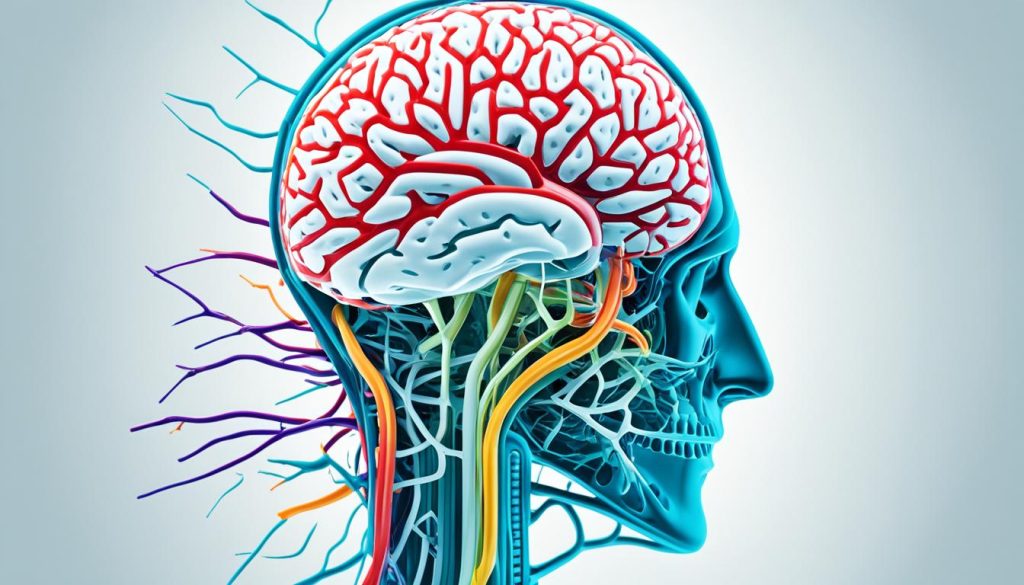
Neural model compression offers numerous benefits, ranging from reduced model size and increased speed to improved energy efficiency. These advantages open up a wide range of applications across sectors, including surveillance and security, healthcare, manufacturing, retail, and autonomous vehicles. By leveraging compressed neural networks, organizations can develop practical and efficient AI solutions that enhance performance and resource utilization.
Conclusion
Neural network compression is a crucial technique in the field of artificial intelligence, enabling more efficient, practical, and sustainable AI solutions. By reducing the size of neural networks while maintaining their accuracy, we can deploy AI on resource-constrained devices and achieve real-time, on-device intelligence.
The advancements in model compression techniques have opened up a world of possibilities in various fields, including surveillance, healthcare, manufacturing, and smart cities. With compressed neural networks, we can effectively address the challenges of deploying AI on devices with limited resources, such as smartphones and IoT devices.
By making AI more practical and sustainable, we can witness its benefits being extended to a wider range of devices and applications, making technology more inclusive and environmentally friendly. As we continue to innovate in the field of neural network compression, we are paving the way for more efficient AI solutions that can have a positive impact on various industries and sectors.
FAQ
What is neural model compression?
Neural model compression refers to the techniques used to reduce the size of neural networks without compromising their accuracy. These techniques are crucial for enhancing AI efficiency and performance.
Why is neural model compression important?
Neural model compression is important because it addresses the challenges of deploying neural networks on resource-constrained devices. By reducing the model size, it improves storage efficiency, inference time, and energy consumption.
What are some popular model compression techniques?
Four popular model compression techniques are pruning, quantization, knowledge distillation, and low-rank factorization. These techniques aim to reduce the size and computational cost of neural networks.
What are the benefits of neural model compression?
Neural model compression offers several benefits, including reduced model size, increased speed, and energy efficiency. It enables the deployment of AI on resource-constrained devices and has applications across various sectors.
What are the applications of neural model compression?
Neural model compression has a wide range of applications in sectors such as surveillance and security, healthcare, manufacturing, retail, and autonomous vehicles. It enables more practical and efficient AI solutions in these domains.
How does neural model compression contribute to AI efficiency?
By reducing the size of neural networks without compromising accuracy, neural model compression allows for the deployment of AI on resource-constrained devices. This leads to real-time, on-device intelligence and extends the benefits of AI to more devices and applications.


